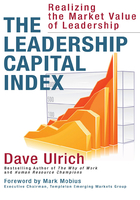
FOREWORD
All of us in the investment world are continually challenged to find that single best share investment that will produce excellent profits and not result in losses for ourselves and our clients. More important, we strive to do that consistently not only for one company stock that we have purchased but for all of the shares in our portfolios. We therefore spend a great deal of time studying companies listed in stock markets all over the world. We pore over company audited accounts, examining the profit and loss figures as well as the balance sheets. The profit and loss numbers give us clues to the company’s history of earnings and what kind of trends they may reveal. By calculating such ratios as return on assets, return on equity, net profit margin, and so forth, we also gain insight into the profitability of the company.
The company’s balance sheet reveals how safe the company is in terms of any possible debts that could result in bankruptcy. Of course, those profit and loss figures as well as balance sheet accounts are not sufficient to really understand what is happening, since the business environment changes from one report date to another. There could be dramatic changes in the company’s sales, the competition, the debts acquired, and so forth. For that reason we try to get updates regarding the company’s activities by visiting the company and having follow-up calls.
Despite all of these efforts, however, our investments still are vulnerable to events both internal and external to the company. For this reason we need to depend on the company’s management—the most important element on the firm’s viability. Who is in charge and what are their capabilities? If we can identify those firms whose managements are capable of confronting the challenges facing the company and, more important, capable of making it grow, then our chances of good investment returns rise dramatically.
But how can we make this assessment of the company’s management? Up to now it has been done on a very subjective basis without any systematic approach. This is a major challenge, since we are dealing with intangible variables such as strategy, brand, and operational capabilities. The key is to assess the firm’s leadership. An interview with the firm’s top management often is not comprehensive and is colored by personal biases.
The good news is that someone has finally developed a systematic and logical way to measure the elusive variable of company leadership that plays such a key role in determining company success and market value. Dave Ulrich has found a way to measure this variable, so critical to investment success. For investment professionals like me, this book is long overdue.
Anyone interested in improving investment performance should not only read but also carefully study this book. By realizing the market value of leadership through a leadership capital index, investors will be able to reduce their overall investment risk and improve their chances of investment success.
—Mark Mobius, Executive Chairman, Templeton Emerging Markets Group